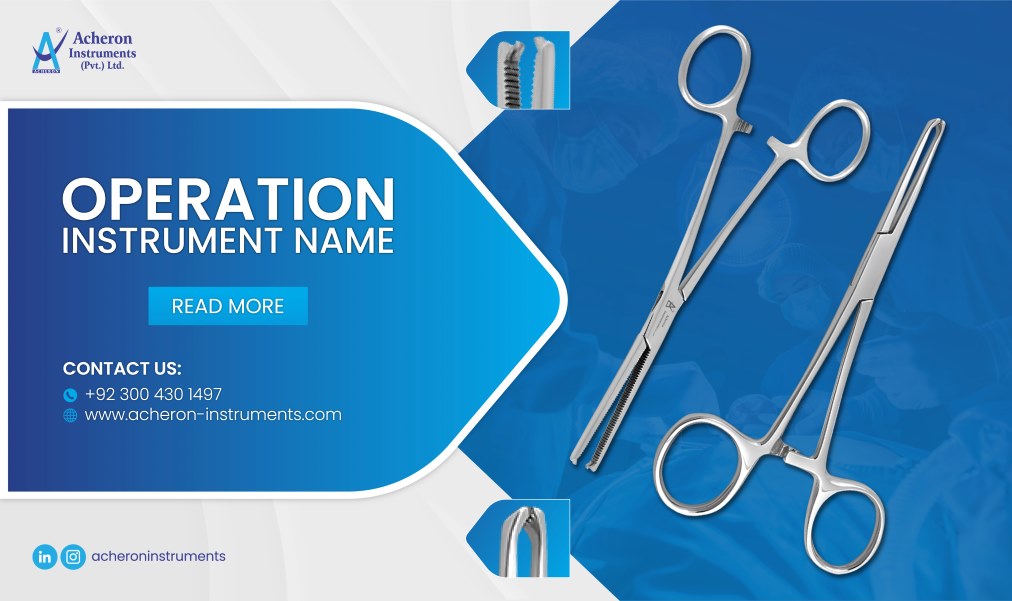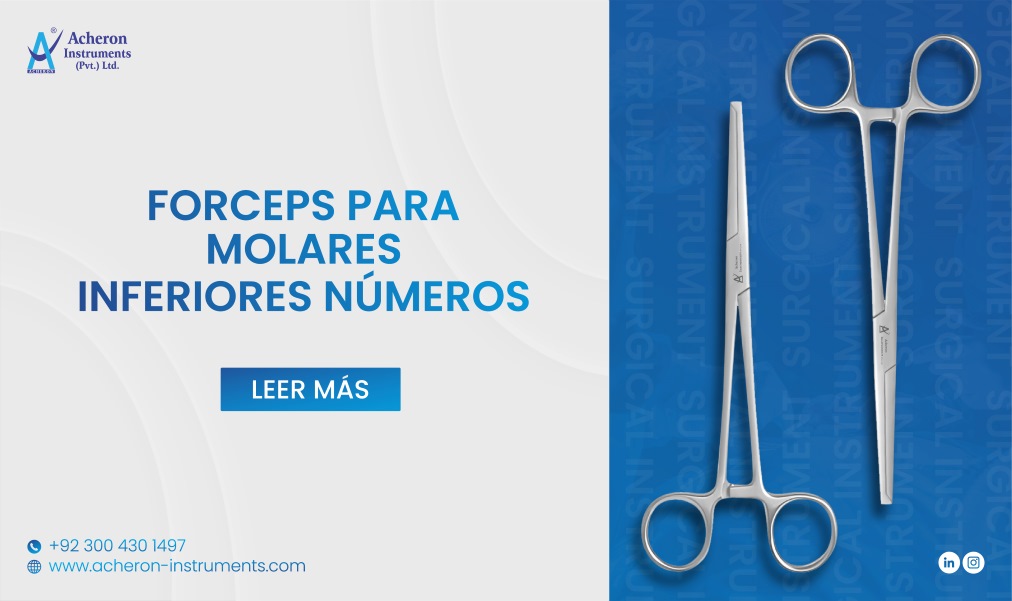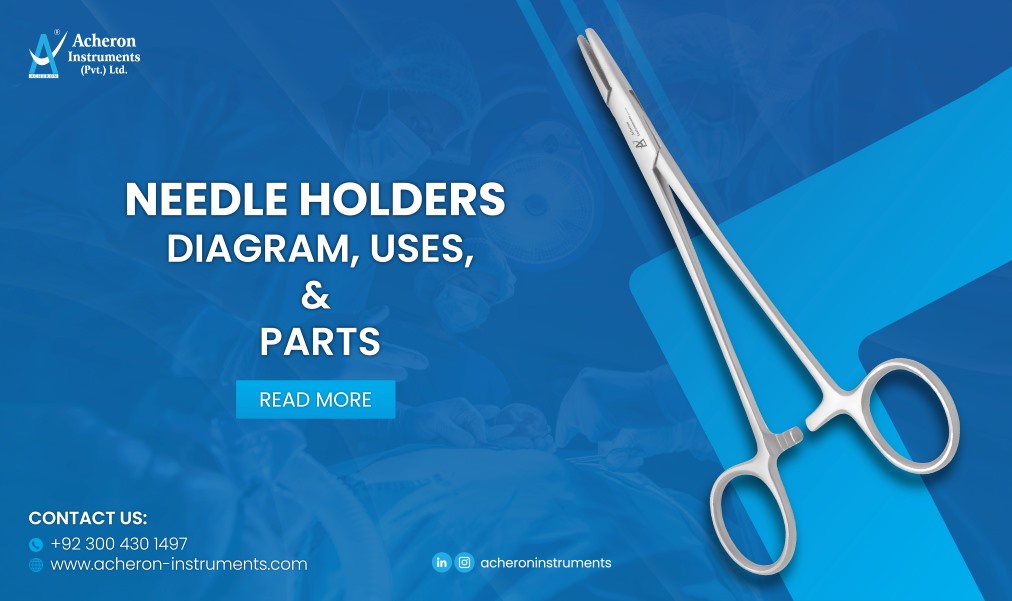We are here to provide you with a detailed discussion regarding pin and wire cutters. These instruments are sharp in general. The handles of these instruments are built to provide a fine grasp. The main purpose of these surgical instruments is to cut and remove pins and wires while repairing fractures and bone injuries in orthopedic surgical procedures.
Types of surgical wire cutters
There are various patterns available for orthopedic instruments that are as follows:
· Side wire cutter tungsten carbide
· K wire cutter tungsten carbide
· wire cutter with silicone inserts
· Wirecutter tungsten carbide
These instruments are greatly used and best fitted for orthopedic surgical procedures. They are available in single-action and double-action patterns to aid surgeons in a smooth operation. Moreover, whenever there is a need to position the wires through a newly transplanted area, these cutters assist in rehabilitation and gets the procedure done with ease. Also, they are conveniently used in areas where there is a need to cut the wire in a perpendicular position. The best-fitted nature of these instruments allows them to be set flat in the spaces conveniently where wires are clipped or placed.
Here are a few orthopedic instruments that are greatly used by practitioners:
· Bone Chisel
· Tension device
· Bone files
· Bone-cutting forceps
· T-handle
· Surgical curettes
· Wire twister
· Skin hooks
· Trephines Bone Saws
· Bone Impactor
· Measuring instruments
· Suction tubes
· Handheld Retractor
The list doesn’t end up here as there are plenty of categories available that surgeons tend to choose based on their needs and assistance during surgical procedures.
Advantages of surgical wire and pin cutters
There are endless benefits of pin and wire cutters during surgical procedures. Let’s have a look at some of the major benefits:
The cutting mechanism is brilliant
They are corrosion-resistant and provide a great grasping potential to their user/handler because of their fine polished surface. One of the best qualities of this instrument is that it doesn’t bend at all due to its durable and tough nature which makes it last longer. Also, the cutting edge of the instrument is sharp enough to cut the surgical wires easily.
Ideal equipment for various surgical procedures
Surgeons can cut the surgical wires with great efficiency and accuracy using these instruments in addition to providing great feasibility to its handler. The instruments are known for their robust nature and durable material. Being ideal for many surgical operations, these instruments are made up of German stainless steel material and other variations are also available having tungsten carbide inserts.
Safe and reliable
Medical practitioners use these instruments as they provide convenience while cutting surgical wires as well as a firm grip. One more advantage is that they do not damage the nearby structures while operating including ligaments and bones. Thus, it is safe to use and reliable too.
Easy to use and clean
The light-weighted and compact nature of these wire cutters makes them easy to clean. Also, they are reusable as they can be sterilized and don’t take up much space when stored.
Orthopedic procedures and the use of surgical wires and cutters
Orthopedic surgeries include issues related to a birth defect, or arthritis, as well as treatment of the musculoskeletal system including ligaments, bones, joints, nerves, skin, and muscles. Let’s discuss some important surgical practices that involve the use of these instruments tremendously.
1. Knee replacement or Arthroscopic surgery
There can be a complete or partial knee replacement using metal components. Do you know the difference between complete and partial knee replacement? Here’s the answer, In a partial knee replacement, the damaged part is removed and replaced with the metal components maintaining the appropriate structure of the knee. Whereas, in complete knee replacement, there is a complete replacement of the knee with metal components. Arthroscopic surgery is performed to check for the damaged area by inserting a tiny camera.
2. Hip replacement surgery
Surgical wires and cutters are widely used in this surgery which is usually the most common type of orthopedic surgery specifically in adults. Also known as hip arthroplasty, this treatment involves the replacement of damaged hip joints with artificial implants. As a person ages, there is a lot of wear and tear throughout their lifetime. Sometimes, the cartilage breaks as the person gets old which can lead to this surgical procedure.
3. Hand and wrist surgeries
The hand and wrist are undoubtedly the most exposed and mainly used body parts and are hence vulnerable to any damage. They are indeed prone to fractures, infections, arthritis, carpal tunnel syndrome, dislocations, etc. the orthopedic surgeries involving these damages are rectified using these tools.
4. Shoulder and Rotator cuff surgery
The shoulder and rotator cuff surgeries are quite similar to hip replacement surgeries as both involve the insertion of metal components into the damaged part. In cases where there is no need to replace the area with any artificial parts, arthroscopic surgeries come into use to clean any damaged part of the cartilage.
5. ACL surgery
ACL (anterior cruciate ligament) is a major knee ligament. ACL surgery takes place mostly for injuries during sports that involve sudden changes and stops in direction. In ACL reconstruction, the damaged and torn-out ligament is replaced with another part of the ligament that is usually taken from the other knee. This surgical procedure uses extensive use of surgical cutters, wires, pins, and other orthopedic tools.
Wrap up
It is quite obvious that low-quality orthopedic tools won’t last long and will lead to poor results during surgeries. On the contrary, if you invest in good quality products, you are going to save time and effort. So, don’t settle for less! We at Acheron instruments provide you with the best quality products made of German surgical stainless steel that will make your surgical practices highly efficient and less complicated.








